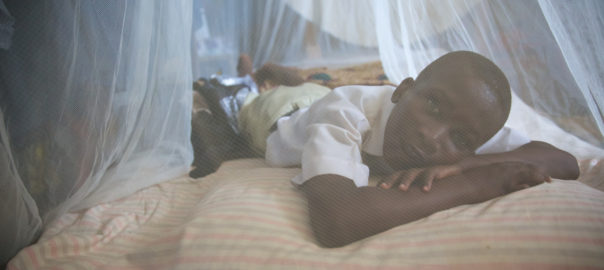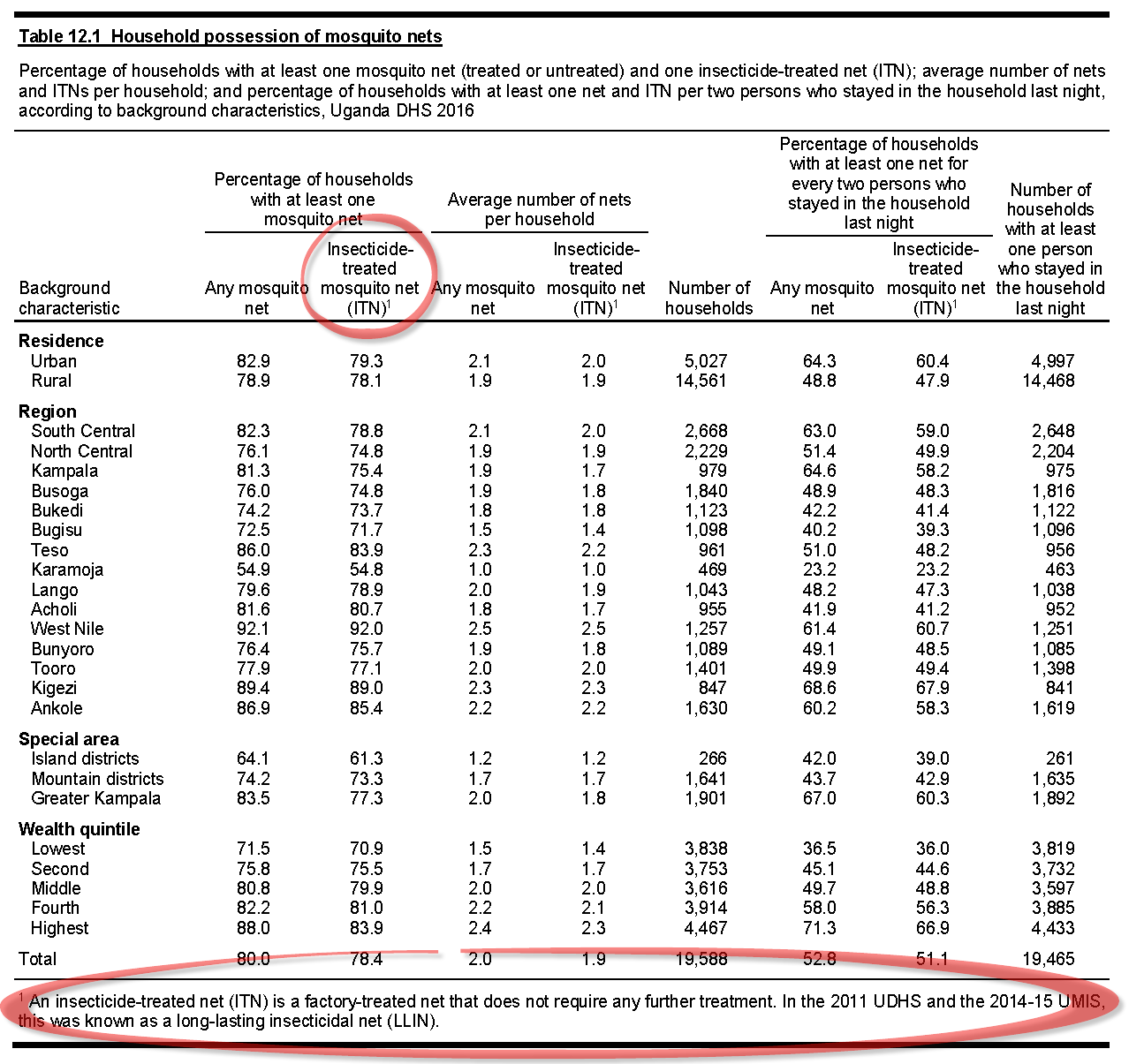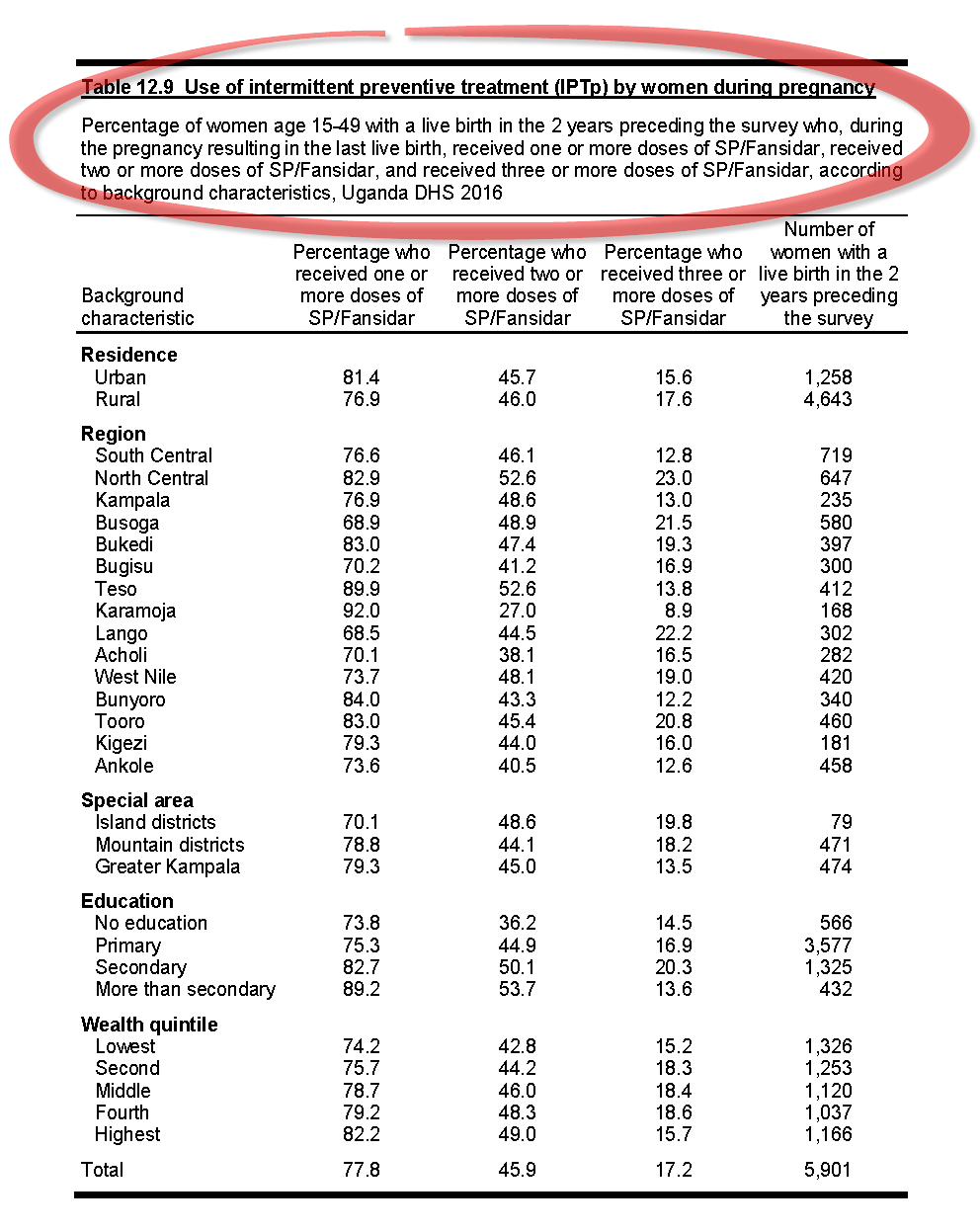New Data Available from DHS-7 Questionnaire: Malaria Indicators

This is Part 4 of the New Data Available from DHS-7 Questionnaire blog series that explores the new data that are available resulting from changes made to DHS-7 questionnaires. This post focuses on changes made to the questionnaire and tabulation of malaria indicators in both DHS and MIS surveys.
Part 4: Malaria
As more countries look toward malaria elimination, the malaria landscape and its measurement are rapidly changing. The DHS Program has adapted its questionnaire and tabulation of malaria indicators to keep up with these changes, which are outlined below.
Indoor Residual Spraying (IRS)
In early 2017, IRS questions were dropped from the household questionnaire.
Why? IRS is typically very focal and done in a small number of districts. National household surveys are not typically sampled to provide representative estimates at this scale. Thus, measures of national IRS coverage from household surveys may not be meaningful.

In the 2016 Liberia MIS, knowing that 1% of households were sprayed in the 12 months before the survey does not tell users about the coverage of the intervention in target areas.
Insecticide-treated nets (ITNs) vs. Long-lasting insecticidal nets (LLINs)
In the most recent questionnaire changes, The DHS Program dropped questions on retreatment of mosquito nets. As a result, tables on net ownership and use in the most recent tabulation plan only have one column for ITNs and do not include a separate column for LLINs. In other words, the ITN column represents nets that are treated with insecticide and no longer require retreatment. This definition is synonymous with LLIN.

The 2016 Uganda DHS and 2017 Malawi MIS are the first surveys to include this change.
Why? Bednets that require annual retreatment and the products used for retreatment are no longer distributed, so the distinction between ITNs and LLINs is no longer meaningful. Differences between values in the LLIN and ITN columns in current ITN tables are minor and likely due to misclassification.
Implications: When looking at trends involving bednets, The DHS Program recommends comparing data from the ITN column over time rather than mixing and matching with the LLIN column from older surveys. Just keep in mind that the definition of ITNs in surveys released before 2018 included nets that had been retreated.
Intermittent preventive treatment during pregnancy (IPTp)
In the past, the table on “Use of IPTp by women during pregnancy” specified that the source of at least one of the doses of SP/Fansidar was an antenatal care visit. Moving forward, the source of IPTp is no longer specified. The question regarding the source of SP/Fansidar will remain in the questionnaire, but it will no longer be presented as part of the standard indicator.

Learn more in the 2016 Uganda DHS Final Report.
Why? The original language specifying the source of doses was added when IPTp was a new intervention and there was concern that women might report medication taken for treatment of malaria instead of malaria prevention. The intervention is now well known, and this specification is no longer necessary.
Implications: Users should use caution when interpreting trends if the data are pulled directly from the table in the final report. However, the indicator measuring doses of SP/Fansidar regardless of the source can be calculated for past surveys in the datasets and is available in STATcompiler.
To learn more, read the full blog series, download the DHS-7 model questionnaires, or visit the Malaria Surveys website.
What do you think of this change? Let us know in the comments section below! And don’t forget to subscribe to The DHS Program newsletter for more updates on our digital tools, surveys, and more.
Photo Caption: © 2016 Sarah Hoibak, VectorWorks, Courtesy of Photoshare

